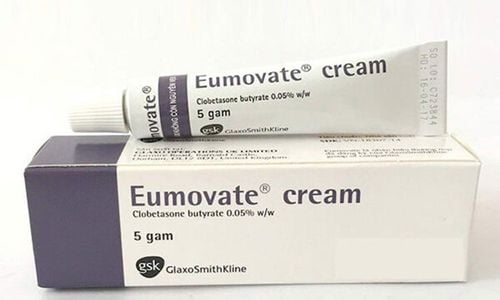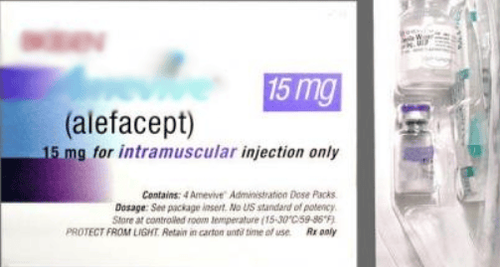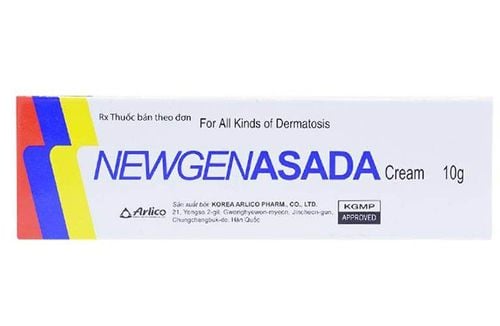This is an automatically translated article.
Betasalic medicine has the main active ingredients Betamethasone dipropionate and salicylic acid. It is used to reduce inflammatory manifestations in the treatment of keratosis pilaris and corticosteroid-responsive dry skin diseases.
1. What is Betasalic?
Betasalic medicine 10g includes the following ingredients: Active ingredients Betamethasone Dipropionate, Salicylic acid. There are also other excipients with a sufficient amount of 10g. Betasalic medicine 10g is prepared in the form of ointment for topical application.
Effect of active ingredient Betamethasone: Active ingredient Betamethasone is a corticosteroid hormone, a derivative of Prednisolone with strong anti-inflammatory, anti-allergic and anti-inflammatory properties. When used as an ingredient in topical (topical) medications, Betamethasone is effective in treating certain types of skin infections such as psoriasis, eczema, or other allergic reactions. At the same time, the active ingredient Betamethasone also works to reduce redness, reduce itching very effectively. Effect of Salicylic acid: Active ingredient Salicylic acid is one of the main ingredients of the drug. Salicylic acid has the effect of exfoliating the stratum corneum and disinfecting. The use in topical medicine is used to treat a number of keratinization and peeling diseases such as calluses of the feet, psoriasis, ...
2. Effects of Betasalic
Betasalic drug is indicated for use in the following cases:
Reduces inflammatory markers in the treatment of hyperkeratosis skin diseases and corticosteroid-responsive dry skin diseases. Betasalic is used to treat dermatological conditions such as atopic dermatitis, localized hyperkeratosis of the palms or soles, psoriasis, eczema, and other exfoliative dermatitis.
3. Usage and dosage of Betasalic drug
Betasalic drug is prepared in the form of an ointment applied to the skin. Dosage of Betasalic drug is as follows:
For adults: Apply a thin layer of the drug to the affected skin area 1 to 2 times daily. For some specific cases, a maintenance dose with less frequent dosing may be used. Betasalic is recommended to be prescribed only for two weeks and then the treatment will be reviewed. The maximum weekly dose should not exceed 60 g. For children: The duration of use of this medicine in children should be limited to 5 days. Note: Dosage as provided above is for reference only. The specific treatment dose depends on the health condition and severity of the disease for each specific person. To get a specific and appropriate treatment dose for you, you need to consult with your doctor.
4. In case of over/missing dose of Betasalic
4.1. In case of overdose If any unusual symptoms occur when using the drug in excess of the recommended dose, you need to actively notify the treating doctor immediately or go to the nearest medical facility for examination. . Be sure to keep this leaflet, sample box or used tube if possible. Treatment: The use of appropriate symptomatic treatments. Symptoms of acute adrenal hypersecretion are usually reversible, correcting electrolyte imbalances if necessary. With topical preparations containing salicylic acid, excessive prolonged use can lead to symptoms of salicylate toxicity (salicylism). The treatment of poisoning with active ingredient salicylic acid is mainly symptomatic. The treating doctor will apply measures to remove salicylate quickly from the body. Oral sodium bicarbonate to alkalize the urine and increase the diuretic effect. 4.2. In case of missed dose You do not need to use the missed dose with a double dose for the next dose. You should actively reapply the medicine as soon as possible and follow the recommended dose.
5. Undesirable effects of the drug Betasalic
When using Betasalic medicine, you may experience unwanted effects (ADRs), specifically as follows.
Common with ADR frequency > 1/100: Mild skin irritation, burning sensation.
Uncommon with a frequency of 1/1000 < ADR < 1/100: Dry skin, irritation, itching, folliculitis, hirsutism, folliculitis rash, skin atrophy, striae, chapping, inflammation around the mouth, peeling skin, burning sensation, dermatitis.
Rarely with a frequency of ADR < 1/1000
Other systemic effects may be encountered when using the drug: Water and electrolyte disorders, gastrointestinal disorders, musculoskeletal, neurological, endocrine, eye, metabolic and mental.
You need to proactively notify the treating doctor of the unwanted effects encountered when using the drug.
6. Betasalic drug interactions
Using Betasalic drug with high dose or long-term Paracetamol: Increased risk of high toxicity to the liver. Use of oral antidiabetic agents or insulin with Betasalic: May increase blood glucose levels Concomitant use of Betasalic with digitalis glycosides: May increase the likelihood of cardiac arrhythmias or digitalis toxicity. with hypokalemia. Concomitant use of Betasalic with Phenobarbital, Phenytoin, Rifampicin or Ephedrine: May increase the metabolism and reduce the therapeutic effect of Betamethasone. Use of Betasalic with Coumarin-type anticoagulants: May increase or decrease the anticoagulant effect.
7. Some notes when using Betasalic drug
Before using Betasalic you need to carefully read the instructions for use and refer to the information below.
7.1. Contraindication of Betasalic drug Betasalic drug is contraindicated or not to be used in the following cases:
You are experiencing a lot of red acne, acne, perioral dermatitis, itching around the anus and genitals genitals. People with a history of allergy or hypersensitivity to any ingredient of the drug. People with bacterial and viral infections, systemic fungal infections not controlled by appropriate chemotherapy. Do not use the medicine on large areas of skin, chapped, sensitive skin or on mucous membranes. Children under 1 month of age are infected. Do not use the drug for ophthalmology. 7.2. Precautions when using Betasalic drugs Betasalic drugs should not be used together with oral contraceptives. This is because in these cases, salicylic acid production can increase steroid absorption. If local intolerance occurs, treatment should be discontinued. Betasalic drug is only used on the skin, avoid applying it to the mouth, eyes, mucous membranes, avoid applying the drug to a large area or under a tight bandage and apply it in a thick layer. Betasalic should not be treated continuously for more than 8 days. During long-term corticosteroid therapy, the patient should be monitored regularly. For psoriasis: Topical corticosteroids such as Betasalic can be dangerous for psoriasis such as the risk of recurrence of the disease when the drug is stopped, the risk of the disease turning into systemic pustular psoriasis. and the risk of skin infections caused by a weakened skin barrier. Therefore, careful monitoring is required in people being treated for psoriasis. If the skin is dry or irritated, discontinue use immediately. Systemic absorption of the main active ingredients Betamethasone dipropionate and salicylic acid may be increased when the drug is used over large areas or under closed folds during prolonged treatment. or with too much steroids. In these cases, appropriate precautions should be taken, especially for infants and young children. 7.3. Using drugs with special groups Betasalic drug use in children:
Betasalic drug should be avoided in breastfed children. Dosage in children should be limited to 5 days. You need to be very careful when using Betasalic skin ointment on large areas of skin or damaged skin or with prolonged use or with a tight bandage on children. The reason is that the drug can be absorbed, causing inhibition of the hypothalamic-pituitary-adrenal (HPA axis) function, leading to adverse effects on the whole body. The use of topical corticosteroids, specifically Betasalic, has been reported to cause hypothalamic-pituitary-adrenal axis depression, Cushing's syndrome, delayed weight gain, growth retardation, and increased intracranial pressure. Clinical signs of adrenal insufficiency in children include low plasma cortisol levels and unresponsiveness to ACTH stimulation. Manifestations of increased intracranial pressure include bulging fontanelles, headache, and bilateral papilledema. Use of drugs on drivers and use of machines: Currently, there are no studies on the effects of Betasalic drug on the ability to operate machines, drive vehicles, work at height and other cases.
Drug use during pregnancy:
Main active ingredient Salicylic acid can be absorbed systemically but very little. There are no restrictions on the use of this drug during pregnancy. The use of corticosteroids, particularly Betasalic drugs during pregnancy or in a person of childbearing potential, must be weighed against the benefits and risks of the drug to the mother and to the embryo or fetus. Weight loss in infants has been reported when the mother has been on long-term corticosteroid therapy. The reason is due to the possibility of suppression of the adrenal cortex in the newborn due to long-term use of corticosteroids by the mother, when prescribing corticosteroids, the need or benefit to the mother must be weighed against the risk to the fetus. Neonates whose mothers have received significant doses of corticosteroids during pregnancy should be carefully monitored for signs of hypoadrenalism. Use of the drug during lactation
Active ingredient Salicylic acid does not restrict use to those who are breast-feeding. Betamethasone is excreted in breast milk and may be harmful to infants. This is because the drug can inhibit growth and cause other unwanted effects, such as hypoadrenalism. The benefits of use to the mother must be weighed against the potential harm to the infant. However, do not apply Betasalic to the area around the breast to avoid swallowing the medicine. Above is all information about Betasalic drug, patients need to carefully read the instructions for use, consult a doctor / pharmacist before using. Absolutely do not arbitrarily buy Betasalic drugs to treat diseases at home, because there may be unwanted side effects on health.
Please dial HOTLINE for more information or register for an appointment HERE. Download MyVinmec app to make appointments faster and to manage your bookings easily.













